I can’t recommend Mirage mini splits enough if you’re hunting for a reliable, energy-efficient way to keep your home comfortable year-round.
After installing one in my own space, I’ve experienced firsthand how these ductless systems deliver powerful cooling and heating without the hassle of traditional HVAC setups.
They’re quiet, eco-friendly, and budget-conscious, making them a fantastic choice for anyone looking to upgrade their home’s climate control.
In this article, I’ll share my journey with the Mirage mini split, break down its strengths and weaknesses, offer maintenance tips, and compare it to other brands to help you decide if it’s right for you.
My Experience With The Mirage Mini Split
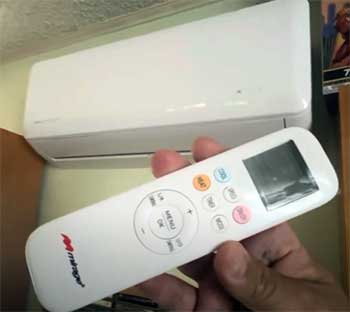
When I decided to install a Mirage mini split in my home last summer, I was skeptical but hopeful.
My old window AC unit was loud, inefficient, and frankly, an eyesore.
I wanted something sleek, modern, and capable of handling both scorching summers and chilly winters.
After researching, I settled on the Mirage Ventus X 12,000 BTU model, drawn by its 19.5 SEER rating and promise of whisper-quiet operation.
The installation process, handled by a certified technician, was smoother than I expected—no ductwork, just a small hole in the wall for the refrigerant lines. Within a day, my living room was transformed into a cool oasis.
Using it daily, I noticed the unit’s ability to maintain consistent temperatures. The inverter technology adjusts the compressor speed based on the room’s needs, so I wasn’t dealing with the annoying on-off cycling of older systems.
At 28 decibels, it’s quieter than my fridge humming in the kitchen. I control it with a remote, which is intuitive, though I wish the display was a tad brighter in daylight. During winter, the heat pump kept my space cozy without spiking my electric bill, a huge relief.
My only hiccup was a minor setup issue with the remote, but a quick call to customer service sorted it out. Overall, it’s been a game-changer for my 550-square-foot living area, blending seamlessly into my home’s aesthetic while delivering reliable performance.
The first few weeks were a revelation. I’d come home from a swelteringly unbearable day, and within minutes of turning on the Mirage, my living room felt like a sanctuary. The air distribution was even, with no hot or cold spots, thanks to the unit’s multidimensional fan outlet.
I also appreciated the sleep mode, which automatically adjusts the temperature at night, letting me drift off without feeling too cold or waking up sweaty. It’s these little touches that make living with the Mirage so pleasant.
Sure, I had to learn the remote’s quirks, like pressing the right combination of buttons to activate certain modes, but once I got the hang of it, it was smooth sailing. My friends have even commented on how unobtrusive the unit is, both in look and sound, which is a far cry from the clunky window unit I used to wrestle with every summer.
Pros of The Mirage Mini Split
- Energy Efficiency That Saves You Money

One of the biggest reasons I’m thrilled with my Mirage mini split is its energy efficiency.
With SEER ratings up to 20, it sips electricity compared to traditional HVAC systems.
My monthly bills dropped noticeably—sometimes by 30%—because the inverter-driven compressor only uses the energy it needs.
Unlike my old window unit, which ran full blast or not at all, this system fine-tunes its output to match the room’s temperature.
It’s like having a smart thermostat built into your AC, keeping costs low while maintaining comfort. For anyone watching their budget, this is a massive win. I’ve even calculated that the unit could pay for itself in energy savings over a few years, especially if you’re replacing an outdated system.
- Whisper-Quiet Operation
If you’ve ever tried to watch TV with a noisy AC unit rattling in the background, you’ll appreciate the Mirage’s ultra-quiet operation. At 27-28 decibels, it’s barely audible—think the sound of a gentle breeze or a hushed conversation.
I’ve had guests over who didn’t even realize the unit was running until I pointed it out. This makes it perfect for bedrooms, home offices, or anywhere you need peace and quiet.
The outdoor unit isn’t much louder, clocking in at 53-59 decibels, so your neighbors won’t be knocking on your door with complaints. It’s been a blessing during late-night movie marathons or when I’m working from home and need to focus.
- Eco-Friendly Refrigerant
I care about the environment, and the Mirage mini split aligns with that value. It uses R-410A refrigerant, which is non-toxic, non-flammable, and doesn’t harm the ozone layer. Knowing my cooling and heating system isn’t contributing to environmental damage gives me peace of mind.
Plus, the high-efficiency design means less energy waste, which is another check in the eco-friendly column. If you’re looking to reduce your carbon footprint without sacrificing comfort, this system delivers.
I feel good knowing my choice is both practical for my wallet and kinder to the planet.
- Sleek and Compact Design
The Mirage mini split doesn’t scream “appliance” the way some clunky units do. Its sleek, white design blends into my living room like a piece of modern decor. At just 11 pounds, the indoor unit is lightweight and doesn’t dominate the wall space.
Whether you’re cooling a small apartment or a larger open-concept room, it fits without being an eyesore. The compact outdoor unit is easy to tuck away, too, which is great if you’re tight on exterior space.
I’ve gotten compliments on how it doesn’t disrupt my room’s vibe, which is more than I can say for my old window unit.
- Long Warranty for Peace of Mind
Mirage offers a solid warranty—two years on parts and six years on the compressor, provided you register the unit and have it installed by a licensed professional. This gave me confidence in my purchase, knowing I’m covered if something goes wrong.
The warranty terms are straightforward, and the requirement for professional installation ensures the system is set up correctly, reducing the risk of issues down the line. It’s a safety net that makes the investment feel secure.
I’ve heard horror stories about other brands’ warranties being restrictive, but Mirage’s coverage feels fair and reliable.
- Versatile Performance for Year-Round Comfort
Another standout is the Mirage’s ability to handle both cooling and heating effectively. With a 12,000 BTU capacity, my unit cools my 550-square-foot space effortlessly, even during brutal summer heatwaves.
The heat pump function is just as impressive, keeping my home warm without relying on energy-hogging electric heating elements. I was surprised at how seamlessly it transitions between seasons, making it a true all-in-one solution.
The multidimensional fan outlet ensures air reaches every corner of the room, so I never feel like one spot is colder or warmer than another.
Cons of The Mirage Mini Split
- Professional Installation Required
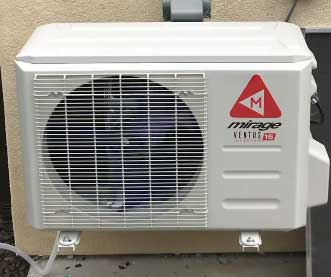
While I appreciate the professional installation for ensuring everything works perfectly, it’s a downside for those hoping for a DIY project.
Unlike some brands like MRCOOL, which offer pre-charged lines for easier setup, Mirage requires a certified technician to maintain the warranty.
This added about $1,500 to my total cost, which stung a bit. If you’re handy and looking to save on installation, this could be a drawback, though I found the professional setup worth it for the long-term reliability.
It’s something to factor into your budget if you’re considering Mirage.
- Limited Smart Features
In a world where everything seems to connect to your phone, the Mirage mini split feels a bit behind the curve. While some models offer Wi-Fi connectivity, it’s not standard across the board, and my Ventus X didn’t come with it.
I rely on the remote, which works fine, but I’d love the option to adjust settings from my phone or integrate with Alexa. Compared to brands like Gree or Midea, which often include robust app-based controls, Mirage’s smart features are limited, which might disappoint tech-savvy users.
I’ve adapted, but it’s an area where Mirage could step up.
- Warranty Registration Hassles
The warranty is great, but registering it can be a chore. Mirage requires you to register within a specific timeframe, and the process involves submitting paperwork through their website or a dealer.
I nearly missed the deadline because the instructions weren’t clear, and I had to call customer service to confirm. It’s not a dealbreaker, but it’s an extra step that could catch you off guard if you’re not organized.
Make sure you keep your purchase details handy to avoid any hiccups. A simpler process would make the experience smoother.
- Variable Customer Service
My experience with Mirage’s customer service was decent—they resolved my remote issue quickly—but I’ve heard mixed reviews from others. Some users report slow response times or difficulty getting replacement parts, especially if you’re not near a major distribution center.
With warehouses in places like Los Angeles and Houston, availability isn’t always an issue, but it depends on your location. If you value top-tier customer support, you might want to research local service options before buying. It hasn’t been a major issue for me, but it’s worth noting.
- Limited Model Variety
Mirage offers a decent range of single- and multi-zone systems, but their lineup isn’t as extensive as some competitors. For example, if you need a ceiling cassette or floor-mounted unit, your options with Mirage are limited compared to brands like Mitsubishi or Daikin.
I was fine with the wall-mounted Ventus X for my needs, but if you’re outfitting a larger home or want more design flexibility, you might find Mirage’s selection a bit restrictive. It’s something to consider if your space has unique requirements.
Maintenance Tips For Your Mirage Mini Split
- Clean the Filters Regularly
Keeping your Mirage mini split running smoothly starts with the filters. I clean mine every four to six weeks, and it’s a breeze. Just pop out the filters from the indoor unit, rinse them under warm water, and let them air dry.
This prevents dust and allergens from clogging the system, which can reduce efficiency and air quality. I noticed a difference in airflow after my first cleaning—my living room felt fresher, and the unit didn’t have to work as hard.
Set a calendar reminder to stay on top of this, and you’ll extend the life of your system. It takes less than 10 minutes and makes a huge difference.
- Check the Condensate Drain
The condensate drain can get clogged with dirt or mold, especially in humid climates like mine. I check the drain line every few months by gently flushing it with a mixture of water and vinegar. This prevents water buildup, which could lead to leaks or damage.
If you notice water pooling near your indoor unit, don’t ignore it—address it quickly to avoid bigger issues. A professional can help if you’re unsure, but this simple step can save you from costly repairs.
I learned this the hard way when I ignored a small drip and had to call a technician.
- Schedule Annual Professional Inspections
Even though I handle basic maintenance myself, I schedule a professional inspection once a year. A technician checks the refrigerant levels, inspects the electrical connections, and ensures the system is running at peak efficiency.
My last inspection caught a minor issue with the outdoor unit’s fan, which was fixed before it became a problem. This costs me about $100 annually, but it’s worth it to catch issues early and keep the warranty valid.
Find a certified HVAC pro in your area to make this a hassle-free habit. It’s like an annual checkup for your system’s health.
- Keep the Outdoor Unit Clear
The outdoor unit needs breathing room to work properly. I make sure mine is free of leaves, dirt, or debris, especially after storms. A quick sweep around the unit every month keeps it in top shape.
I also installed a small concrete pad with rubber pads to reduce vibrations and noise, which has worked wonders. If you live in a snowy area, clear snow buildup promptly to avoid strain on the system.
A little TLC goes a long way in keeping your Mirage mini split humming along. It’s an easy way to prevent efficiency losses.
- Monitor for Refrigerant Leaks
Some Mirage models, like the Intense Series, have built-in sensors to detect refrigerant leaks, which is a lifesaver. If your unit doesn’t have this feature, keep an eye out for signs like reduced cooling or hissing sounds.
I haven’t had this issue, but a friend did, and catching it early saved her unit. If you suspect a leak, call a professional immediately—don’t try to fix it yourself, as refrigerant handling requires special training.
Regular checks can prevent major headaches and keep your system efficient. It’s one less thing to worry about if you stay proactive.
- Use the Remote Wisely
The remote is your main interface with the Mirage mini split, so take time to learn its features. I had a moment of frustration when I couldn’t get the sleep mode to work, only to realize I was pressing the wrong button combo.
Check the manual (even if it’s in Spanish, as mine was) or look up an English version online. Keep the remote’s batteries fresh, and store it somewhere safe to avoid losing it. If you run into issues, like I did with the initial setup, a quick call to customer service can clarify things.
Comparing Mirage To Other Mini Split Brands
When I chose my Mirage mini split, I weighed it against several other brands, including Sea Breeze, Daizuki, ZOKOP, and Premium Levella. Each has its strengths and quirks, but I’ll break down how Mirage stacks up in a head-to-head comparison.
My goal is to give you a clear picture of what sets Mirage apart, based on my experience and research into these competitors, so you can decide which fits your home best.
- Mirage Vs. Sea Breeze: Efficiency and Noise Levels
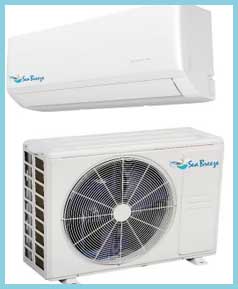
Sea Breeze mini splits, like their 19 Series and 24 Series, offer decent efficiency with SEER ratings up to 24, slightly edging out my Mirage Ventus X’s 19.5 SEER.
I was tempted by their Intelligent Dusting Switch, which reverses airflow to clean the outdoor unit—a cool feature Mirage lacks.
However, Sea Breeze units are noticeably louder, with noise levels around 60 decibels for the outdoor unit compared to Mirage’s 53-59 decibels.
My Mirage is whisper-quiet indoors at 28 decibels, perfect for my living room, whereas Sea Breeze’s indoor units can hit 35 decibels, which might disrupt a quiet evening.
Sea Breeze’s guarantee is also weaker, with shorter coverage than Mirage’s two-year parts and six-year compressor warranty. If you prioritize silence and long-term reliability over fancy cleaning features, Mirage is the better bet.
- Mirage Vs. Daizuki: Reliability and Customer Support
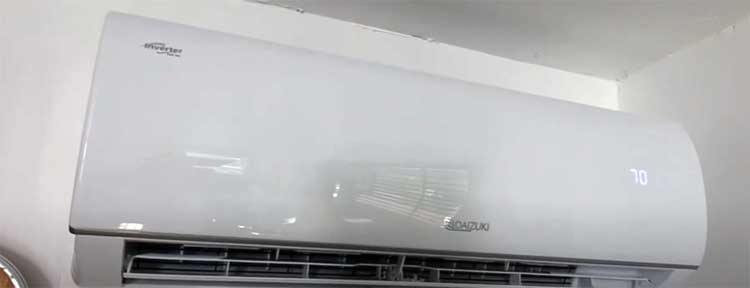
Daizuki mini splits, sold at retailers like Home Depot, seem like a budget-friendly option, but my research raised red flags. Users report inconsistent performance, like noisy operation despite claims of quietness, with one owner noting their 18,000 BTU unit was louder than expected due to misleading spec sheets.
My Mirage, by contrast, has been consistently quiet and reliable, matching its advertised 27-28 decibels. Daizuki’s customer service also seems spotty—some users got no resolution for issues like faulty valves, forcing them to replace entire units within three years.
My Mirage customer service experience was smooth when I had a remote glitch, and their six-year compressor warranty gives me confidence. Daizuki’s app integration is a plus, but without HomeKit support, it’s not a game-changer.
For me, Mirage’s dependability and better support make it the winner.
- Mirage Vs. ZOKOP: Build Quality and Longevity
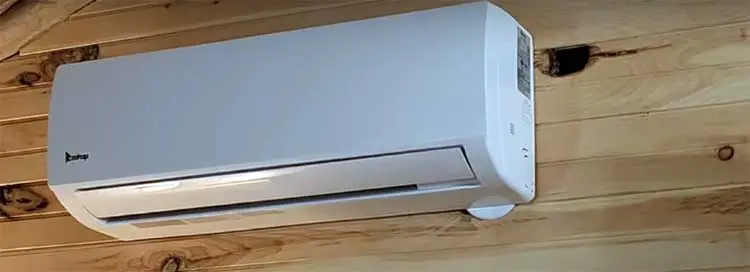
ZOKOP mini splits are often marketed as affordable alternatives, but there’s little buzz about their long-term performance, which made me cautious. Available through online retailers, they boast SEER ratings around 19, similar to Mirage, but user feedback suggests hit-or-miss quality.
Some report issues like refrigerant leaks or weak cooling after a year, which I haven’t experienced with my Mirage. ZOKOP’s warranties are typically shorter—often one to two years—compared to Mirage’s robust six-year compressor coverage.
My Mirage has been rock-solid for months, with no signs of wear, and its R-410A refrigerant is eco-friendly, a detail ZOKOP rarely highlights. If you’re after a system you can trust for years, Mirage’s build quality and warranty outshine ZOKOP’s budget appeal.
- Mirage Vs. Premium Levella: Features and Usability
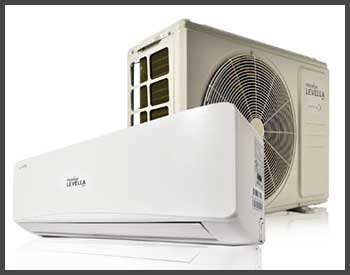
Premium Levella mini splits, like the RGS7A6/BGEFU1, caught my eye with features like Freeze Protection mode, which maintains a low temperature to prevent pipe freezing.
I accidentally triggered this on a friend’s unit, and it was a hassle to disable without powering off the system.
Mirage’s remote is simpler, though it lacks such advanced modes. Both brands offer similar SEER ratings (around 19-20), but Premium Levella’s units are heavier and bulkier, making installation trickier.
My Mirage’s lightweight indoor unit (11 pounds) was a breeze to mount, blending into my wall seamlessly. Premium Levella’s customer feedback is mixed, with some praising performance but others noting unclear manuals.
Mirage’s design and ease of use make it more user-friendly for me, though Premium Levella’s extra modes might appeal if you need specific features.
Frequently Asked Questions (FAQ)
Mirage mini splits are manufactured by HVAC Mirage Inc., a company based in Mexico with over 25 years of experience in the HVAC industry. They’ve built a strong reputation in their home market and have been expanding in the U.S., offering energy-efficient ductless systems known for affordability and reliability.
With proper maintenance, Mirage mini splits can last 7 to 10 years, though some users report lifespans exceeding a decade. Regular filter cleaning and annual professional inspections, like I do with mine, are key to maximizing durability and performance.
Reliability varies, but Mitsubishi and Daikin consistently rank high due to their long lifespans and comprehensive warranties. Mirage is a strong contender for budget-friendly reliability, as my unit has been trouble-free, but Mitsubishi’s premium build often edges out for long-term dependability.
If your Mirage mini split isn’t cooling, check the filters for clogs, ensure the condensate drain is clear, and verify the remote settings. Low refrigerant or electrical issues could also be be culprits—my remote glitch caused a similar issue once. Call a professional to diagnose and fix complex problems.
Why Mirage Mini Splits Are Worth Your Investment?
After months of using my Mirage mini split, I’m convinced it’s a smart buy for anyone seeking efficient, quiet, and eco-friendly climate control.
Its energy savings, sleek design, and reliable performance make it a standout, despite minor drawbacks like the lack of advanced smart features. Whether you’re cooling a small apartment or heating a cozy home, Mirage delivers without breaking the bank.
I urge you to consider it for your space—trust me, you’ll love the comfort and savings as much as I do.
